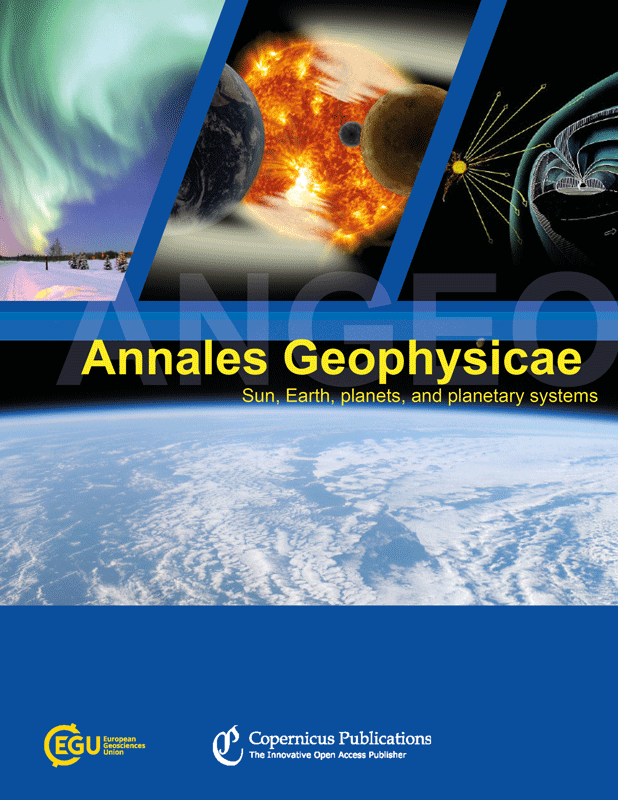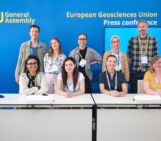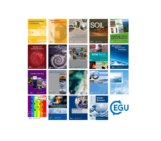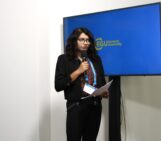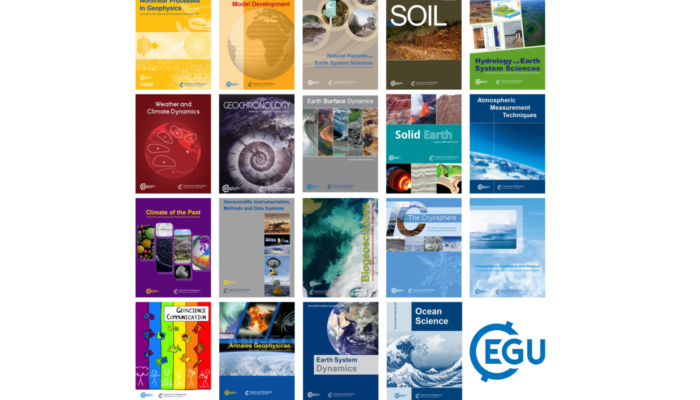
Each month we feature specific Divisions of EGU and during the monthly GeoRoundup we put the journals that publish science from those Divisions at the top of the Highlights section. For September, the divisions we are featuring are Geosciences Instrumentation and Data Systems (GI) and Atmospheric Sciences (AS). They are served by the journals: Annales Geophysicae (ANGEO), Atmospheric Chemistry and Physics (ACP), Atmospheric Measurement Techniques (AMT), SOIL, Weather and Climate Dynamics (WCD), and Geoscientific Instrumentation, Methods and Data Systems (GI).
Featured highlights
Calibrating estimates of ionospheric long-term change – 24 Sep 2024
Long-term change in the ionosphere are expected due to increases in greenhouse gases in the lower atmosphere. Empirical formulae are used to estimate height. Through comparison with independent data we show that there are seasonal and long-term biases introduced by the empirical model. We conclude that estimates of long-term changes in ionospheric height need to account for these biases.
Atmospheric Chemistry and Physics (ACP)
Biological and dust aerosols as sources of ice-nucleating particles in the eastern Mediterranean: source apportionment, atmospheric processing and parameterization – September 8 2024
Ice nucleating particle (INP) concentrations are required for correct predictions of clouds and precipitation in a changing climate, but they are poorly constrained in climate models. We unravel source contributions to INPs in the eastern Mediterranean and find that biological particles are important, regardless of their origin. The parameterizations developed exhibit superior performance and enable models to consider biological-particle effects on INPs.
Atmospheric Measurement Techniques (AMT)
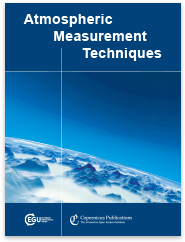 Methane retrieval from MethaneAIR using the CO2 proxy approach: a demonstration for the upcoming MethaneSAT mission – 16 Sep 2024
Methane retrieval from MethaneAIR using the CO2 proxy approach: a demonstration for the upcoming MethaneSAT mission – 16 Sep 2024
MethaneSAT is an upcoming satellite mission designed to monitor methane emissions from the oil and gas (O&G) industry globally. Here, we present observations from the first flight campaign of MethaneAIR, a MethaneSAT-like instrument mounted on an aircraft. MethaneAIR can map methane with high precision and accuracy over a typically sized oil and gas basin (~200 km2) in a single flight. This paper demonstrates the capability of the upcoming satellite to routinely track global O&G emissions.
In this study, for the first time, we combined aerosol data from six satellites using a unified algorithm. The global datasets are generated at a high spatial resolution of about 25 km with an interval of 30 min. The new datasets are compared against ground truth and verified. They will be useful for various applications such as air quality monitoring, climate research, pollution diurnal variability, long-range smoke and dust transport, and evaluation of regional and global models.
The EarthCARE lidar cloud and aerosol profile processor (A-PRO): the A-AER, A-EBD, A-TC, and A-ICE products – 12 Sep 2024
ATLID (atmospheric lidar) is the lidar to be flown on the Earth Clouds and Radiation Explorer satellite (EarthCARE). EarthCARE is a joint European–Japanese satellite mission that was launched in May 2024. ATLID is an advanced lidar optimized for cloud and aerosol property profile measurements. This paper describes some of the key novel algorithms being applied to this lidar to retrieve cloud and aerosol properties. Example results based on simulated data are presented and discussed.
We introduce detailed and improved quantitation and semi-quantitation methods of iodide-adduct time-of-flight chemical ionization mass spectrometry (I-CIMS) to measure toluene oxidation intermediates. We assess the experimental sensitivity of various functional group species and their binding energy with iodide ions in I-CIMS. A novel classification approach was introduced to significantly enhance the accuracy of semi-quantitative methods (improving R2 values from 0.52 to beyond 0.88).
Highlights
Natural Hazards and Earth System Sciences
Review article: Drought as a continuum – memory effects in interlinked hydrological, ecological, and social systems – 23 September 2024
Volcano tsunamis and their effects on moored vessel safety: the 2022 Tonga event – 16 September 2024
The 2020 European Seismic Hazard Model: overview and results – 13 September 2024
Precursors and pathways: dynamically informed extreme event forecasting demonstrated on the historic Emilia-Romagna 2023 flood – 04 September 2024
Hydrology and Earth System Sciences
Young and new water fractions in soil and hillslope waters – 20 September 2024
Large-sample hydrology – a few camels or a whole caravan? – 12 September 2024
Mesoscale permeability variations estimated from natural airflows in the decorated Cosquer Cave (southeastern France) – 04 September 2024
Merging modelled and reported flood impacts in Europe in a combined flood event catalogue for 1950–2020 – 02 September 2024
CO2 emissions of drained coastal peatlands in the Netherlands and potential emission reduction by water infiltration systems – 20 September 2024
Can we reliably reconstruct the mid-Pliocene Warm Period with sparse data and uncertain models? – 12 September 2024
Nonlinear Processes in Geophysics
Representation learning with unconditional denoising diffusion models for dynamical systems – 19 September 2024
Ice viscosity governs hydraulic fracture that causes rapid drainage of supraglacial lakes – 05 September 2024
EGU in the news – September
- A better understanding of climate change: Researchers study cloud movements in the Arctic, reports idw online, featuring research published in EGU’s Atmospheric Chemistry and Physics journal.

